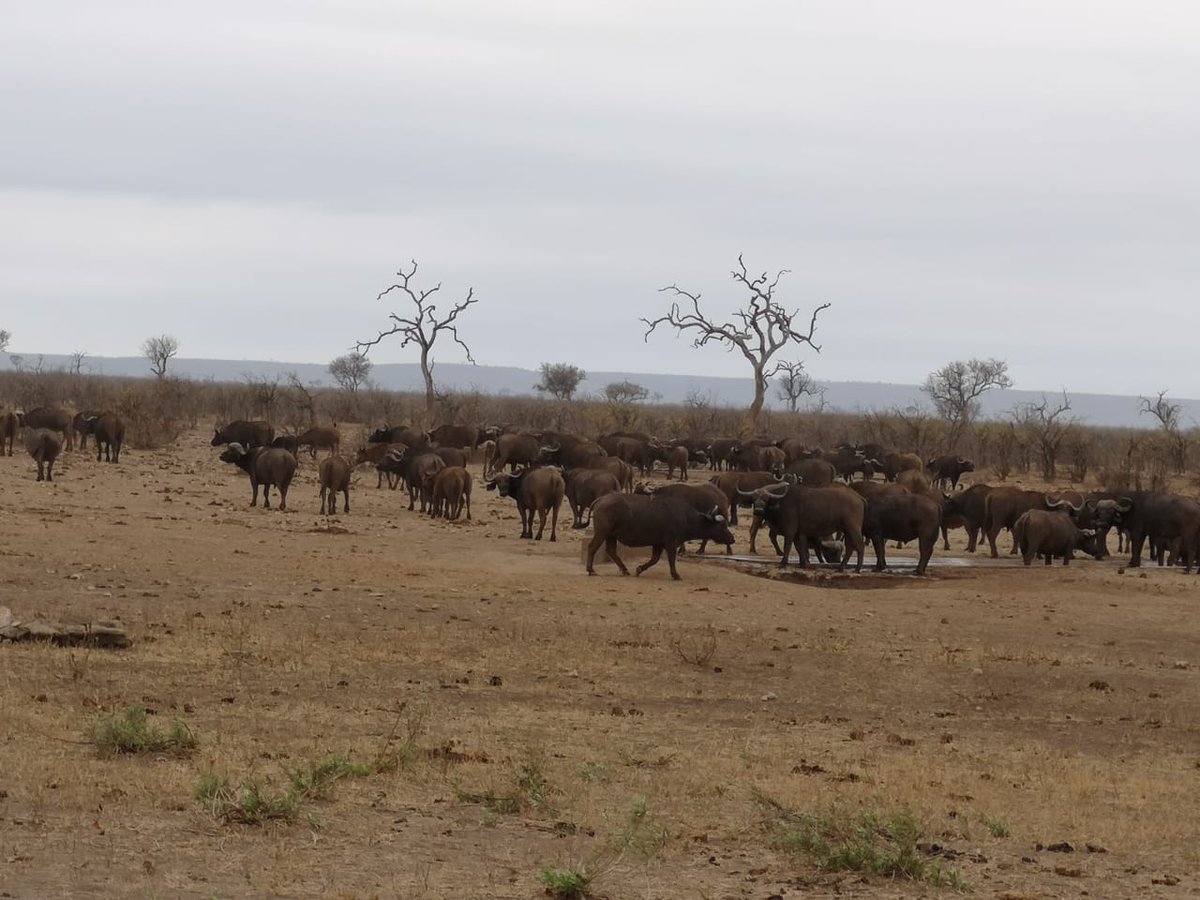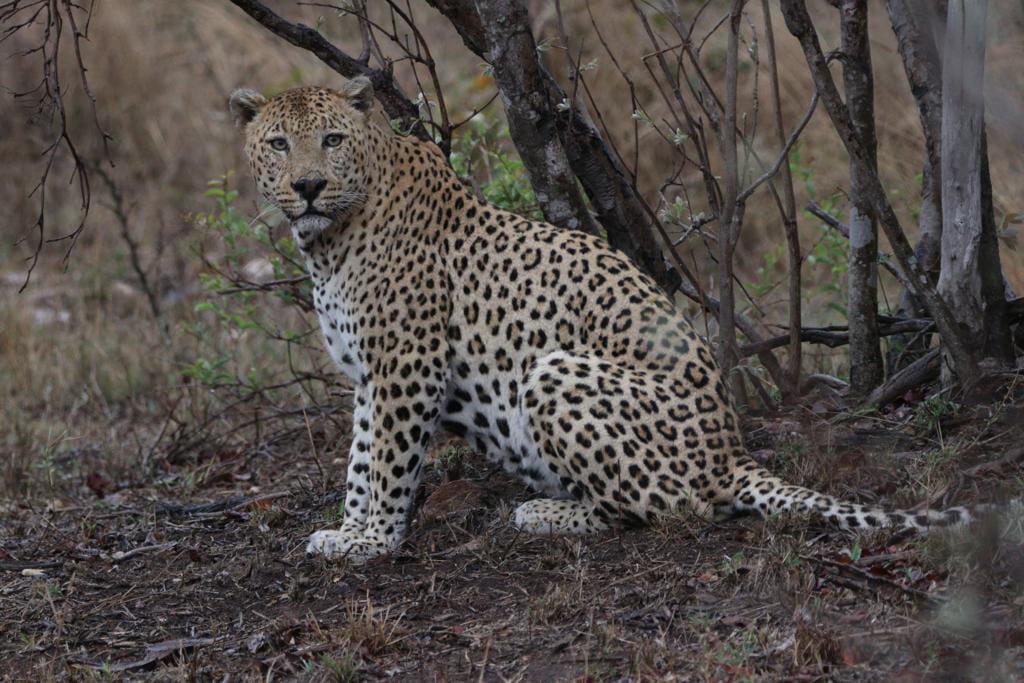Re: Kruger Drought/Dry Seasons and Dam Levels 2015-18
Posted: Thu Oct 18, 2018 10:53 am
Here is a bit of info circulated by Dr Freek Venter, who is now resident at Grietjie.
Conservation issues for GPNR Newsletter October 2018
Freek Venter
El Niño is brewing again
Most of the long term predictions indicate that we may be in for another dry, hot, El Niño summer (for those interested in more detail including the science and models go to http://www.weatherphotos.co.za/el-nino-updates.html for a summary of the most important websites in this regard). From these predictions the chance of El Niño forming in 2018 is around 70%; triple the normal likelihood.
From the map below it is clear that El Niño affects rainfall all over the world, and brings hot and dry conditions to our region. It is caused by an abnormal warming of the surface waters of the eastern Pacific Ocean near the equator as a result of weak trade winds in that area. Strong trade winds are needed to push warm surface water of the ocean to the west in order to allow the upwelling of cold water at the coast of Ecuador. In southern Africa El Niño has the effect that the summer low-pressure cell that normally occurs over the subcontinent, move eastwards over the Indian Ocean. As long as we experience cold fronts sweeping in far enough north to reach Grietjie, instead of the Inter Tropical Convergence Zone (ITCZ) bringing in moist air from the tropics, we will most probably not receive significant rainfall.
El Niño is not an abnormal feature in the Lowveld (see the long term rainfall graph for Kruger National Park below). Dry and wet periods occur in cycles of more or less 10 years each. Such dry periods are definitely not all doom and gloom. They represent excellent opportunities for ecosystems to rid themselves of unwanted poor genetic material. It is quite normal to have increased mortalities of certain animals during such droughts, and although we may feel sad to see emaciated and dying animals, it is part of an important ecosystem process. Some species excel in such conditions (especially predators). There is sometimes an influx of species from the dryer western parts of the country. Brown hyena and bat-eared fox are now and then recorded in Kruger during such droughts.
The impacts of the droughts of the 1980’s and 1990’s, when all perennial rivers flowing through the KNP except the Sabie River stopped flowing, gave effect to the decade-long KNP Rivers Research Programme. This program gave birth to the notion of minimum Instream Flow Requirements for rivers, and has become embedded as the Environmental Reserve provision in the National Water Act. Because of this and lessons learned during previous droughts, none of the KNP rivers stopped flowing during the 2015/16 drought, one of the worst in KNP.
Droughts always teach us some important lessons! I am sure residents from Cape Town will forever approach their water-use situation in a different way. However, on the downside for Grietjie residents, droughts can cause the water table to drop significantly, and boreholes can be permanently damaged if they are pumped dry. Make sure you know your borehole’s capacity and stay within its limits until adequate rains have fallen.
Aliens
Invasive aliens have been described as the second largest threat to biodiversity after habitat loss (for more info go to https://www.iucn.org/theme/species/our- ... ve-species ). In South Africa the Conservation of Agriculture Resources Act (CARA - Act 43 of 1983) legislates 198 Invasive Alien Plants (IAPs) in 3 categories in an effort to try and stem the tide as some of the most detrimental invaders are planted as ornamental plants by uninformed gardeners. These plants should be a no-no in a protected area like ours (please see addendum for complete list).
It is undesirable to have such plants in gardens, as some will inevitably escape, causing the reserve to spend time and funds to control them. We have started to eradicate several species that have escaped. A total of 84 plants (Cactus sp, Queen of the night Cereus jamacaru and Australian pest
pear or Suurturksvy Opuntia stricta) have been sprayed along the Entrance, South and River roads, as well as Marble Hill. This program will continue and you will be updated via our newsletter.
Conservation issues for GPNR Newsletter October 2018
Freek Venter
El Niño is brewing again
Most of the long term predictions indicate that we may be in for another dry, hot, El Niño summer (for those interested in more detail including the science and models go to http://www.weatherphotos.co.za/el-nino-updates.html for a summary of the most important websites in this regard). From these predictions the chance of El Niño forming in 2018 is around 70%; triple the normal likelihood.
From the map below it is clear that El Niño affects rainfall all over the world, and brings hot and dry conditions to our region. It is caused by an abnormal warming of the surface waters of the eastern Pacific Ocean near the equator as a result of weak trade winds in that area. Strong trade winds are needed to push warm surface water of the ocean to the west in order to allow the upwelling of cold water at the coast of Ecuador. In southern Africa El Niño has the effect that the summer low-pressure cell that normally occurs over the subcontinent, move eastwards over the Indian Ocean. As long as we experience cold fronts sweeping in far enough north to reach Grietjie, instead of the Inter Tropical Convergence Zone (ITCZ) bringing in moist air from the tropics, we will most probably not receive significant rainfall.
El Niño is not an abnormal feature in the Lowveld (see the long term rainfall graph for Kruger National Park below). Dry and wet periods occur in cycles of more or less 10 years each. Such dry periods are definitely not all doom and gloom. They represent excellent opportunities for ecosystems to rid themselves of unwanted poor genetic material. It is quite normal to have increased mortalities of certain animals during such droughts, and although we may feel sad to see emaciated and dying animals, it is part of an important ecosystem process. Some species excel in such conditions (especially predators). There is sometimes an influx of species from the dryer western parts of the country. Brown hyena and bat-eared fox are now and then recorded in Kruger during such droughts.
The impacts of the droughts of the 1980’s and 1990’s, when all perennial rivers flowing through the KNP except the Sabie River stopped flowing, gave effect to the decade-long KNP Rivers Research Programme. This program gave birth to the notion of minimum Instream Flow Requirements for rivers, and has become embedded as the Environmental Reserve provision in the National Water Act. Because of this and lessons learned during previous droughts, none of the KNP rivers stopped flowing during the 2015/16 drought, one of the worst in KNP.
Droughts always teach us some important lessons! I am sure residents from Cape Town will forever approach their water-use situation in a different way. However, on the downside for Grietjie residents, droughts can cause the water table to drop significantly, and boreholes can be permanently damaged if they are pumped dry. Make sure you know your borehole’s capacity and stay within its limits until adequate rains have fallen.
Aliens
Invasive aliens have been described as the second largest threat to biodiversity after habitat loss (for more info go to https://www.iucn.org/theme/species/our- ... ve-species ). In South Africa the Conservation of Agriculture Resources Act (CARA - Act 43 of 1983) legislates 198 Invasive Alien Plants (IAPs) in 3 categories in an effort to try and stem the tide as some of the most detrimental invaders are planted as ornamental plants by uninformed gardeners. These plants should be a no-no in a protected area like ours (please see addendum for complete list).
It is undesirable to have such plants in gardens, as some will inevitably escape, causing the reserve to spend time and funds to control them. We have started to eradicate several species that have escaped. A total of 84 plants (Cactus sp, Queen of the night Cereus jamacaru and Australian pest
pear or Suurturksvy Opuntia stricta) have been sprayed along the Entrance, South and River roads, as well as Marble Hill. This program will continue and you will be updated via our newsletter.


